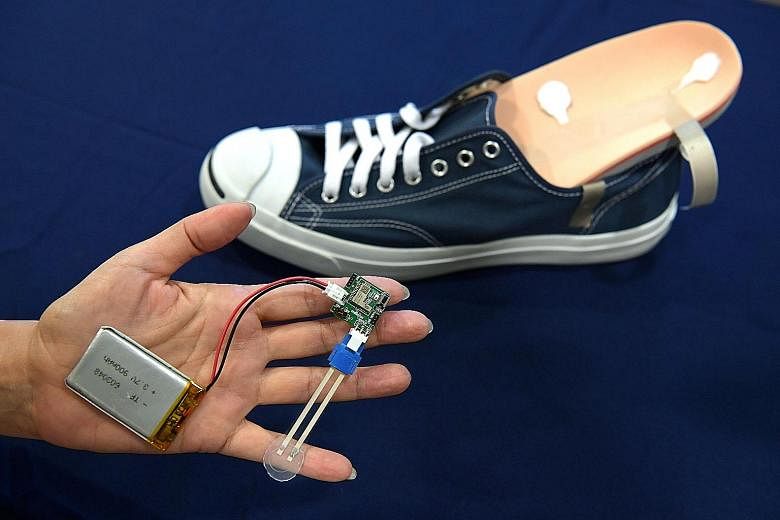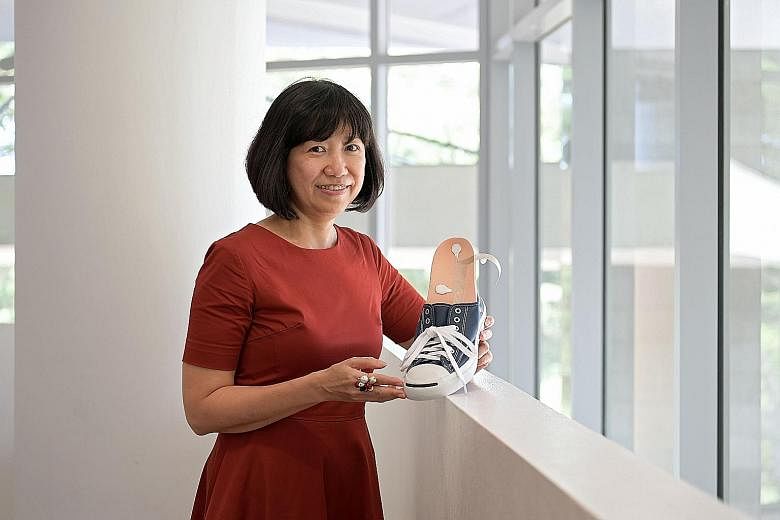The Republic has one of the highest rates of foot and toe amputations in the world - 180 for every 100,000 adult diabetics in 2015.
Foot ulcers are one of the problems that diabetes can cause, and local company FlexoSense is working on a shoe insole that uses flexible pressure sensor technology which could help cut the re-ulceration rate among patients.
A prototype of the product was showcased yesterday at Nikkei X NUS Digitalisation Forum 2018, which aims to encourage greater exchange and collaboration between the innovation sectors of Japan and Singapore.
The insole can be customised to fit a diabetic shoe, and patients can use an app to identify where they are putting most pressure on their feet - allowing them to take a break from walking to rest the affected areas.
The technology was developed by Professor Lim Chwee Teck from the National University of Singapore's (NUS) Department of Biomedical Engineering and his team in 2016.
FlexoSense, a company set up by the NUS, will conduct patient trials and aims to have the product ready to market in about five years.
"The problem now is that diabetic patients are unable to feel the pain of the foot ulcers due to diabetic neuropathy," said co-founder Chia Lye Peng. "The aim of the product is to help reduce the re-ulceration rate among diabetic patients."
Other projects on show at the forum included a digital record of patients' health information, such as medical histories and treatment plans, developed by NUS spin-off MediLot. There was also an interoperative MRI operating theatre dubbed iMRI developed by Japanese tech firm Hitachi.
Senior Minister of State for Health Amy Khor told the event: "Advancements in medicine and healthcare technology offer new opportunities and potential for healthcare.
"By keeping abreast of developments, we can introduce clinically effective and cost effective innovations to improve the delivery of our healthcare services."
The forum was held at the Shaw Foundation Alumni House at the NUS and organised by Japan-based media organisation Nikkei and NUS Enterprise - the university's entrepreneurial arm.


